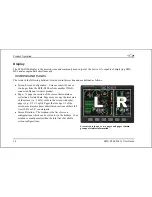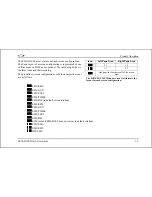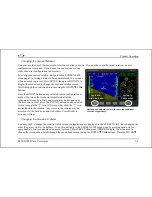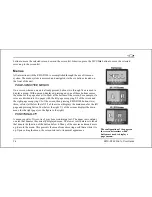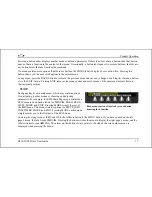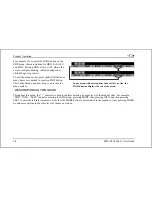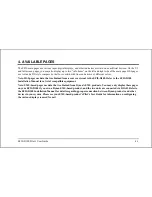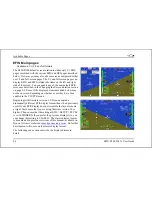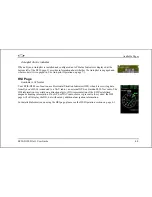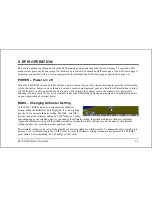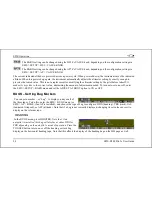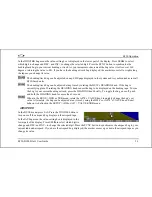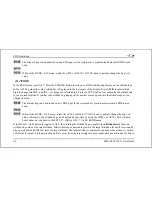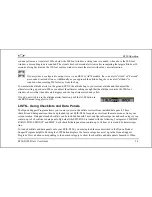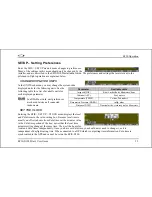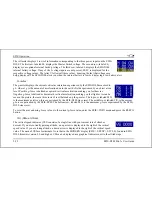
Available Pages
Your airspeed, heading, or altitude is at its set bug value when the bug’s inverted triangle encloses the triangle of the
digital readout’s pointer. The altitude bug also acts as an altitude alerter; see BUGS – Setting Bug Markers on page 5-2
for more information.
When a Dynon Autopilot is installed and configured, the heading and altitude bugs are repurposed as the target heading
(in HDG mode), ground track (in TRK mode), and altitude (in ALT mode). With an AP installed, all bugs are hollow
when not engaged in their respective AP modes, and filled in when they are. See Autopilot Operation on page 7-1.
Slip/ skid ball
The slip/skid ball works much like a standard mechanical gauge. It is a visual representation of lateral
acceleration. If the ball is within the two vertical lines, then you are in coordinated flight.
Altimeter setting display
The current altimeter setting is displayed at the bottom right of the screen below the altitude tape. The value
is shown in either inches of Mercury or millibars depending on your preference set in the EFIS > BARO
menu.
Clock/ timer
The clock is displayed in the lower left-hand corner of the screen, below the airspeed tape. To set the
clock, enter the EFIS > SETUP > CLOCK submenu. When a count-down or count-up timer is
enabled, it is displayed in place of the clock until the timer is stopped. The character next to the clock indicates whether
the unit is displaying Local time (L), Zulu time (Z), or a timer (T). If a GPS is connected to your Dynon network and is
outputting time information, the Zulu time of all connected products is auto-set to that reported by the GPS.
4-8
EFIS-D100 Pilot’s User Guide

